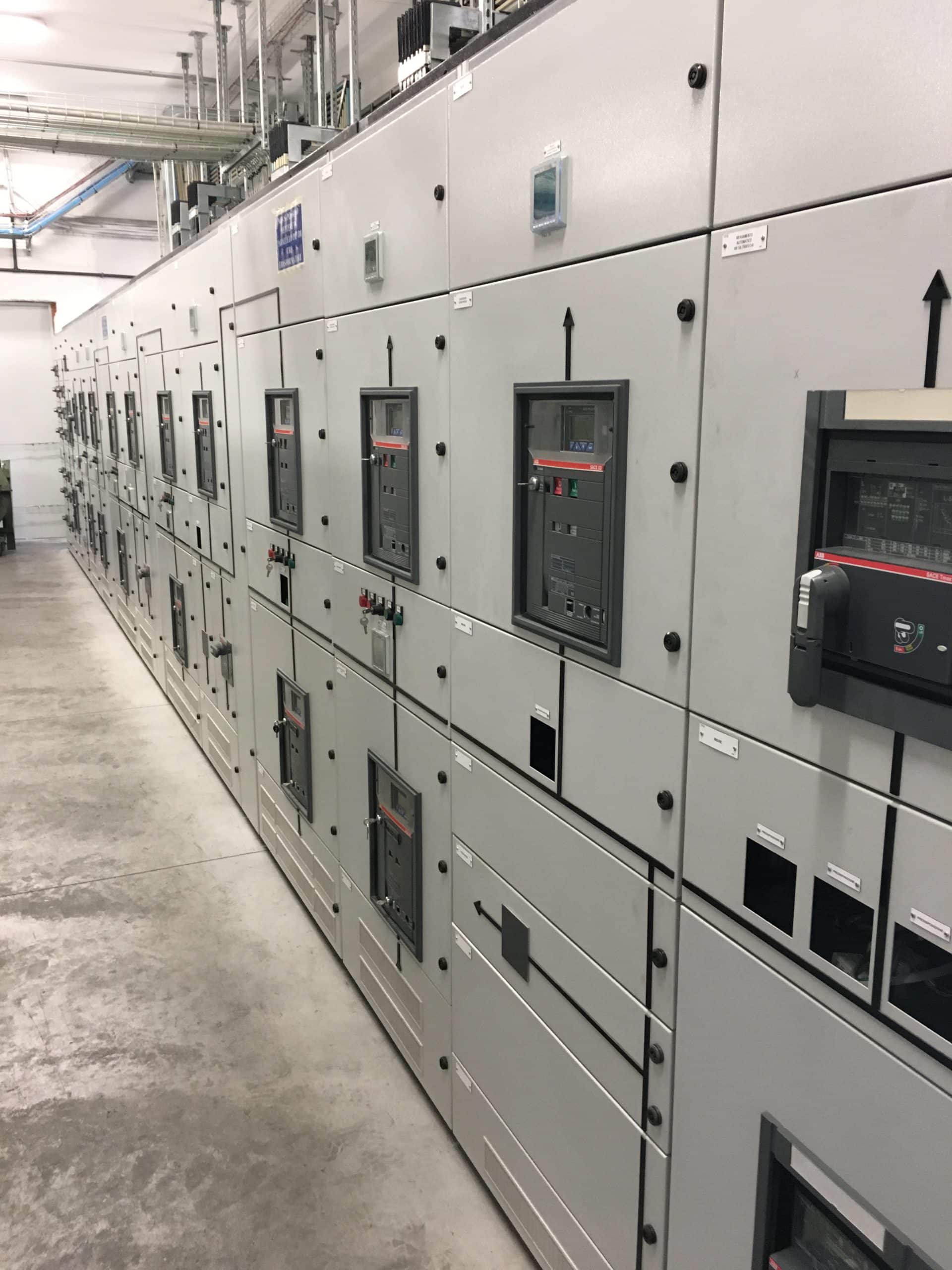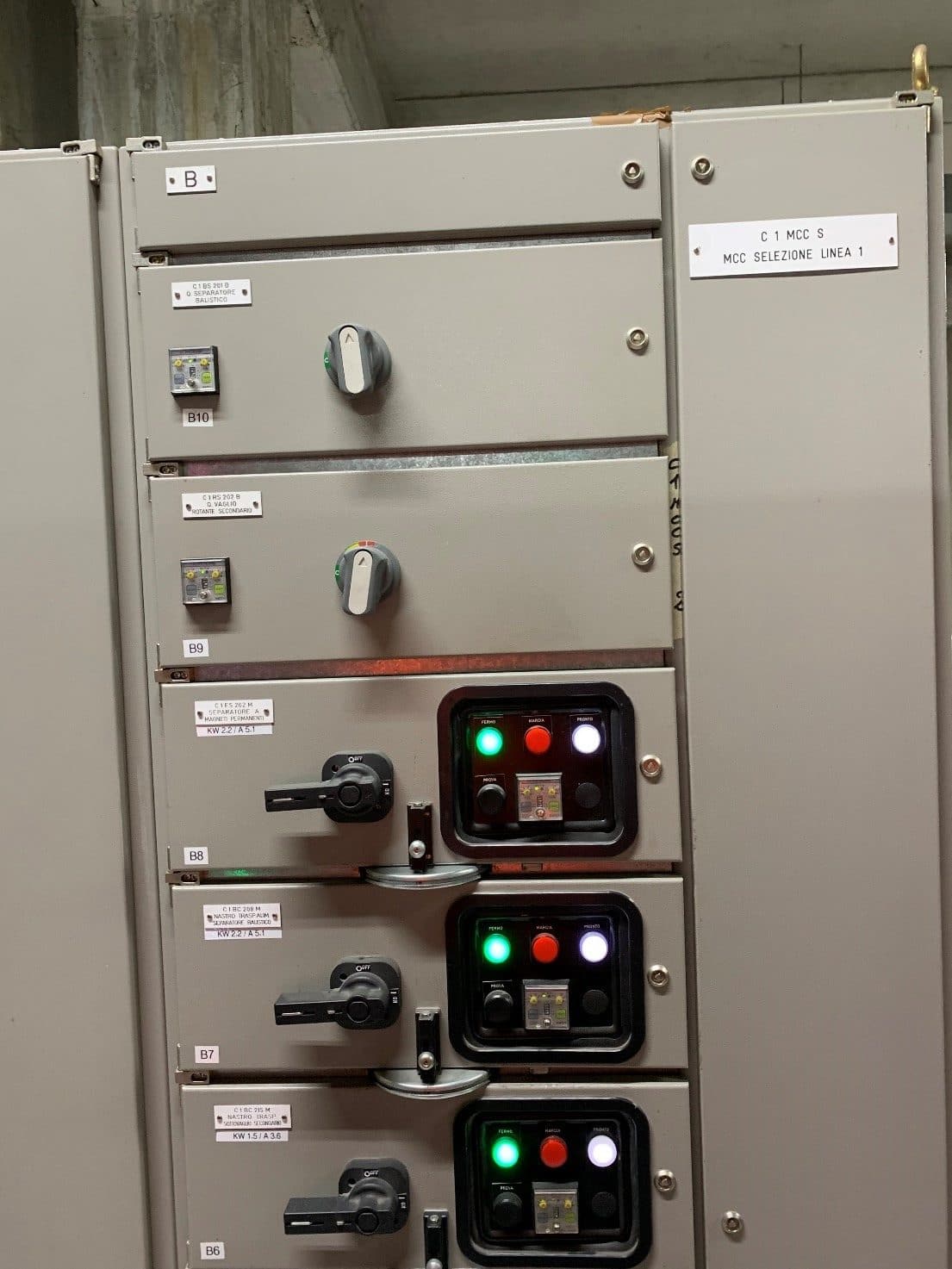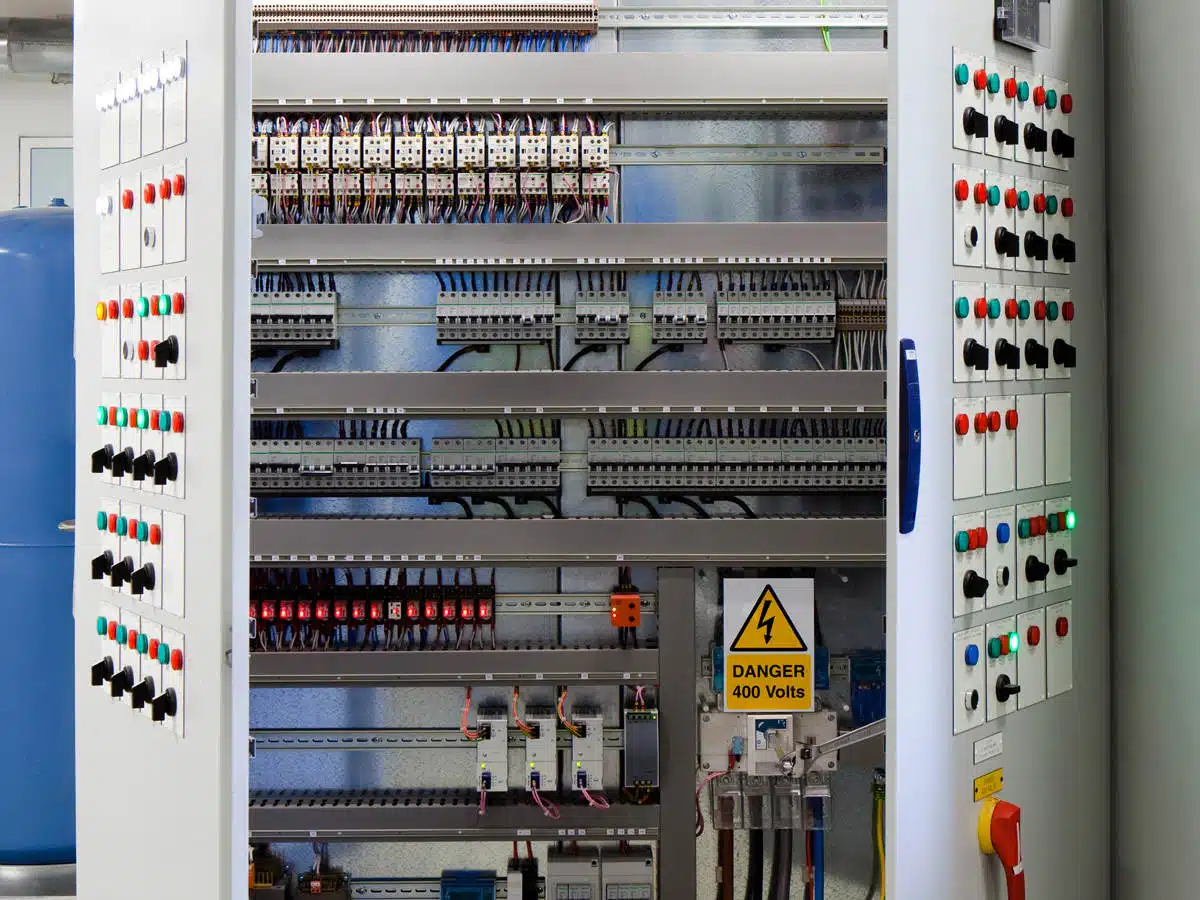Last edit: 09/05/2023
Switchgears and switchboards are intended to ensure the power distribution to other devices, boards and panels. Although these cabinets are different, they are often easily confused and so it is important to know how to distinguish them.
Switchgears

The term Switchgear indicates a type of structure of an electrical panel whereby each circuit breaker or electrical protection is separated in a well defined part of the panel: in switchgear all protective devices are therefore drawout and individually mounted as well as individually compartmented. High voltage electrical gears are usually switchgears.
Also low voltage panels can be in the form of Switchgears. In general these types of panels are used in powering transformers, motors, transmission lines, generators and power networks for industrial, household, commercial and distribution systems. Their purpose is to supply and control power to loads while also protecting them. A switchgear is also useful in identifying fault conditions and cutting off the power supply by disconnecting and isolating it from the circuit. Here the definition:
[IEV ref 441-11-02] Switchgear. A general term covering switching devices and their combination with associated control, measuring, protective and regulating equipment, also assemblies of such devices and equipment with associated interconnections, accessories, enclosures and supporting structures, intended in principle for use in connection with generation, transmission, distribution and conversion of electric energy.
Low voltage Switchgears can be built and tested according to the following USA standards:
– UL 1558. Standard for Metal-Enclosed Low-Voltage Power Circuit Breaker Switchgear.
– ANSI C37.20.1. IEEE Standard For Metal-Enclosed Low-Voltage (1000 Vac And Below, 3200 Vdc And Below) Power Circuit Breaker Switchgear.
– NEMA SG-5. Power Switchgear Assemblies
Switchgears may include any combination of protective devices including insulated case circuit breakers (ICCB), molded case circuit breakers (MCCB) listed in UL-489, fuses listed in UL-508 and UL-977 and power circuit breakers listed in UL-1066.
Looking at the IEC standards, low voltage switchgears are built according to IEC 61439 series. IEC 61439-1: Low-voltage switchgear and controlgear assemblies. The standard also includes Motor control Centers, called, in general, Controlgears. Here the definition
IEC 61439-1] 3.1.1 Low-voltage switchgear and controlgear Assembly. Combination of one or more low-voltage switching devices together with associated control, measuring, signalling, protective, regulating equipment, with all the internal electrical and mechanical interconnections and structural parts, as defined by the original manufacturer, which can be assembled in accordance with the original manufacturer’s instructions.
Switchboards

Switchboards are typically down stream of switchgears, at lower voltages, generally equal or less than 600 V, and they are used to distribute power to multiple sources and transmitting it to individual loads, panel boards and control equipment.
The terminology is used more in North America than in Europe. Switchboards are built and tested according to:
– UL-891: Switchboards. That is a tri-standard, including C22.2 N°244 in Canada and NMX-J-118/2-ANCE.
– NEMA PB-2: Deadfront Distribution Switchboards.
[UL 891] 3.46 Switchboard: a large single panel, structural frame or assembly of panels or structural frames on which may be mounted, on the face or back or both: switches, overcurrent, and other protective devices, buses, and instruments.
Switchboards incorporates only low-voltage power circuit breakers (LVPCB) which are listed in UL-1066 and conform with ANSI C37.13 and NEMA SG-3. They can also include UL 489 Circuit Breakers.
In switchboards the protective devices may be group-mounted or individually compartmented:
– individually compartmented switchboards have each breaker positioned behind its own door and barrier-isolated from surrounding devices;
– some switchboards may incorporate a combination of individually mounted as well as group mounted protective devices. In these cases the individually mounted devices are not individually compartmented.
The IEC standard for switchboards is still the IEC 61439 series.
Motor Control Centers

A motor control center is in general a Controlgear in the IEC terminology and can be confused with a switchgear.
In many commercial and industrial applications, quite a few electric motors are required and it is often desirable to control some or all of them from a central location. The apparatus designed for this function is the motor control center (MCC). Each MCC drawer contains a disconnecting switch to isolate the motor circuit, fuses or circuit breakers to provide short-circuit protection, overload relays or thermal protection to protect the motor and a contactor or a solid-state motor controller.
Therefore a MCC cannot be considered as a switchboard because switchboards are supposed to contain circuit breakers only and not motor contactors (IEC terminology) or motor controllers (USA terminology). A switchboard is not intended for motor control, but only for power distribution.
Industrial Control Panels

An Industrial Control Panel (ICP) is defined as “an assembly of a systematic and standard arrangement of two or more components such as motor controllers, overload relays, fused disconnect switches, circuit breakers and related control devices including pushbutton stations, selector switches, timers, switches and control relays, with associated wiring, terminal blocks, pilot lights and similar components". Here a definition:
[NEC 2020] Industrial Control Panel. An assembly of two or more components consisting of one of the following:
(1) Power circuit. Components only, such as motor controllers, overload relays, fused disconnect switches, and circuit breakers;
(2) Control circuit. Components only, such as push buttons, pilot lights, selector switches, timers, switches, and control relays;
(3) A combination of power and control circuit components.
These components, with associated wiring and terminals, are mounted on, or contained within, an enclosure or mounted on a subpanel.
Industrial control panels are built and tested according to
– UL 508A: Standard for Industrial Control Panels, in USA.
– CSA C22.2 N°. 14. Industrial control equipment and C22.2 N°286. Industrial control panels and assemblies, in Canada
In Europe, the reference standard is IEC 60204-1: "Safety of machinery – Electrical equipment of machines – Part 1: General requirements", with elements taken from EN 61439-1 , depending upon the control panel structure and power it has to handle. An industrial control panel is also a controlgear. The definition of a controlgear is the following.
[IEV ref 441-11-03] Controlgear. A general term covering switching devices and their combination with associated control, measuring, protective and regulating equipment, also assemblies of such devices and equipment with associated interconnections, accessories, enclosures and supporting structures, intended in principle for the control of electric energy consuming equipment.